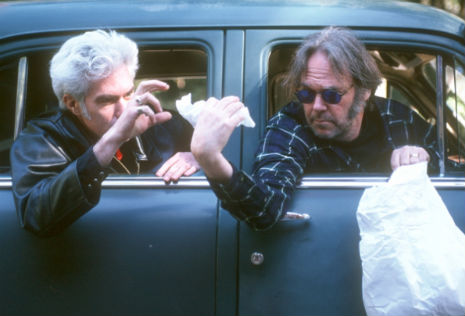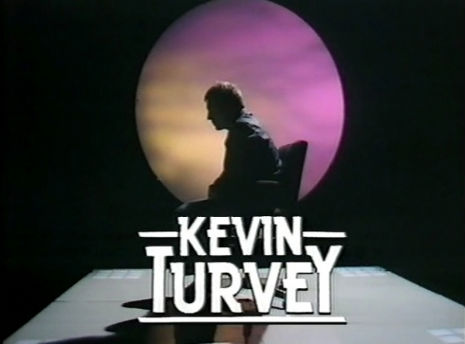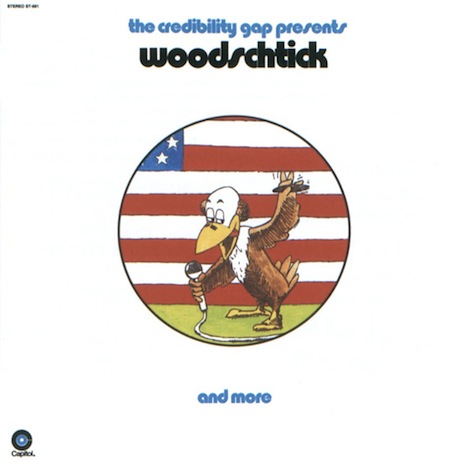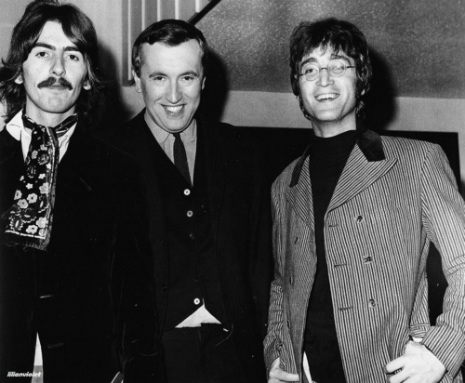
God figures prominently in the video below from Jim Jamusch’s 1997 documentary, Year of the Horse. The film impressionistically chronicles the storied, decades-long partnership between Neil Young and Crazy Horse as they tour the world in 1996.
I dug up the clip after reading a Rolling Stone interview from last April with Frank “Poncho” Sampedro, long-term guitar player for Crazy Horse, brought on board after the tragic death of Danny Whitten, the band’s integral and original guitar player and songwriter. Sampedro first played with the band in 1973, but wouldn’t see material released with Crazy Horse until Zuma in 1975. He says in the interview that his gut tells him that their current tour will be their last.
“Our shows are physical,” says Poncho. “It takes a lot of energy to play that much. It just seems at some point something is going to break. I already had an operation on my thumb. Neil’s wrist bugs him, and he has to tape it when he plays. You can’t fool time. You can’t count on this happening again in five years.”
The quote turned out to be prophetic. Sampedro broke his hand in an accident earlier this month forcing Crazy Horse to cancel the last seven dates of the European leg of their tour. Then, just last week, they announced that they had to bail on an upcoming four-date tour in the U.S. and Canada as well.
It struck me as possible that Neil Young and Crazy Horse might be close to having done their last show (they have a few dates scheduled in September and through the end of the year according to Young’s website), and it made me think about how glad I was that I got to see them in October. Despite the fact that the youngest member in the band (Poncho) was in his early 60’s, they were still great, classically hunching in a tight circle onstage, once again summoning that indescribable thing, those beautifully heavy, organic landscapes that you either get or you don’t and that Crazy Horse uniquely conjures.
Year of the Horse came to mind as I thought about the Crazy Horse live experience. In this more-than-a-rockumentary, rust belt auteur, Jarmusch (Permanent Vacation, Strangers in Paradise, Night on Earth, Broken Flowers, etc.), inter-mingles sometimes confrontational band interviews and grainy concert footage with ethereal, black-and-white, fluttering, ghostly imagery shot from moving vehicles, from inside empty concert venues, and from deep within dancing audiences rendered in slow motion. Vintage out-takes, culled mainly from tours in 1976 and 1986, mark ten year intervals from the time of the contemporary footage, infusing the film with a sort of timelessness, glimpses rather than a solid narrative and the sense the Crazy Horse has been on some kind of a mission, however insane and disjointed, since day one. It’s a chronicle of a band haunted by a turbulent past, littered with lost members and what Young calls a “trail of destruction.”
The film flows nicely from Jarmusch’s previous film, 1995’s Dead Man, a genre-bending western and Native American death journey featuring a stark, reverb-infused instrumental soundtrack crafted by none other than Young himself.
One of the virtues of Year of the Horse is that for all the leave-it-all-on-the-stage swagger of the live performances, there’s often just as much intensity between the band members when they’re not on stage. Then again, during several moments of levity, the film shows how hilariously dopey the band can be at times. These parts leave you laughing and sometimes marveling.
In one segment from 1976, Young sets fire to a bunch of cloth flowers inside a Glasgow hotel room, tries to extinguish them with a pile of napkins and “a little orange juice,” and then, when the hotel manager arrives, sheepishly blames the whole incident on how dangerous it is that the establishment keeps flammable flowers on the table right near where the ashtray sits.
In 1986 footage from Rotterdam, Young, known for literally kicking his players in the ass on stage for screwing up, goes ballistic on bass player Billy Talbot for fucking up during a performance after rehearsing all day. It’s seriously not nice.
Later, intimate black-and-white footage finds the band back in England in 1976 in a small, back-stage, painted brick room, moments after a performance with the crowd yelling for more in the background. Crazy Horse seems wiped out, but they ultimately settle on “Home Grown” for the encore.
While some of the concert footage meanders a bit a times, there are also some great performances here. There’s a blistering, careening, angry take on “Fuckin’ Up” from 1990’s Ragged Glory, wherein the band chugs along with the ferocity and attitude of a bunch of guys half their age. There’s an ultra-heavy, incendiary version of “Tonight’s the Night” that captures all the stop-on-a-dime dynamics of that tune, with the band deconstructing itself into shaky vocal harmonies then ripping into guitar-bending feedback crescendos while Young works out jerky, side-stabbing solos. The film wraps up with footage of the band literally beating the hell out of “Like a Hurricane,” while Jarmusch infuses footage of the same song performed twenty years earlier, demonstrating the unwavering, stubborn energy that can almost transcendentally exude from this epic, multi-decade vision of analog exploration.
Young really liked the film. In a 1997 interview, he said:
I love that movie ... You can really feel the personal view of a filmmaker and, above all, the movie is about the band. It’s more than a simple story; it’s an impression, a succession of feelings. I had the idea of doing this movie - I like this kind of stuff and I like to have a camera with me, but Jim made it possible.
Sampedro, on the other hand, is a little more lukewarm about it. When asked to speak on Year of the Horsein the April Rolling Stone interview mentioned above he answered:
Am I a fan of the movie? In a way, yes, and in a way, no. I think if people really think that’s Crazy Horse . . . it’s a pretty soft version of us. You don’t really see what goes on. But then again, some stuff is so personal you don’t want people to see it all. It would be like one of those weird reality shows. There’s a lot more turmoil than what you see there, and intensity as well.
In interviews, Sampedro harangues Jarmusch on two separate occasions in the film for being an “artsy-fartsy” director who could never even begin to ask a few questions and hope to capture the decades-long saga that is Crazy Horse. In the interest of full disclosure, or maybe just because he’s having fun with it, Jarmusch lets the camera roll and includes footage of the visibly annoyed Sampedro.
Is this the best documentation ever put to film of Neil Young and Crazy Horse? Maybe not, but what does it matter? What it comes down to is that Year of the Horse is just another moment in time for a band on a messy, cantankerous and often incredible journey. It’s just another historical artifact demonstrating that when Crazy Horse is firing on all cylinders, you’d be hard-pressed to find a better rock-and-roll outfit on the entire planet.
Not unlike 1991’s film version of Weld which was released on VHS and never reissued, Year of the Horse seems to be out of print for purchase (there are a few pricey copies listed as “new” left on Amazon) and is often not even mentioned in band bios. It’s a shame. Not only is the film something for fans of Jim Jarmusch to consider, but, if Crazy Horse really is almost done touring, Year of the Horse is a part of the band’s legacy worthy of a look. There might not be much new live footage to ponder.
There is live album called Year of the Horse, but none of the performances from the film appear on it.
The clip below focuses on Jarmusch and Young pretending to take seriously a bunch of completely over-the-top bible verses. There’s a goofy and childlike camaraderie between the two who, frankly, seem a little “light-headed.”
While you’re waiting for the God talk, enjoy a psyched 1970’s super-fan extolling the virtues of “the Neil Young universe” and a spacey, Jesus freak guy enlightening Young on how “San Francisco was the rebirth of the planet.”
Incidentally, Roger Ebert HATED Year of the Horse, giving it a single star and calling it the worst movie he saw in 1997. He describes the music in the film as (among other things) “shapeless, graceless and built from rhythm, not melody.”
Decide for yourself by watching the film in its entirety in the two clips (with Spanish subtitles) below or better still, it’s streaming on Netflix.
[FILM] Year of the Horse (Jim Jarmusch, Neil Young, See more) from santa sancha on Vimeo.
‘Year of the Horse,’ part II, after the jump…















